The next-gen MacBook Pro with Retina Display Review
by Anand Lal Shimpi on June 23, 2012 4:14 AM EST- Posted in
- Mac
- Apple
- MacBook Pro
- Laptops
- Notebooks
The King of All Notebook Displays
For years Apple has been shipping some of the best displays in consumer notebooks, but the MacBook Pro’s Retina Display is in a league of its own. While I never liked the phrase “painted on” in reference to the iPad and iPhone Retina Displays, that’s the best way I can describe the effect the MacBook Pro’s Retina Display has on me. Text really does look painted on. The effect is really the result of two things.
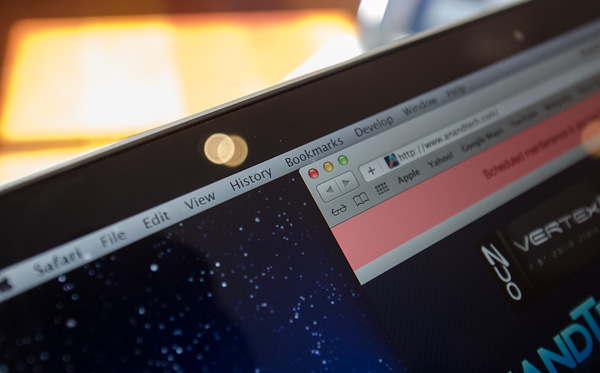
The first is Apple’s removal of its cover glass. LCD panels aren’t particularly attractive, they are ugly squares composed of two pieces of glass and a number of filters/polarizers. To hide the ugly edges, display makers wrap bezels around the display. Most people aren’t fond of bezels so next came a ton of effort to minimize bezel size. An alternative is to simply place a third piece of glass over the entire LCD assembly and make it look as if the bezel and LCD panel are integrated. This outermost layer is known as a cover glass and is what Apple uses on all of its glossy displays. If you’ve ever taken apart a Cinema/Thunderbolt Display or a newer iMac you’ll know that the cover glass is literally just a piece of glass that you have to remove with some suction cups.
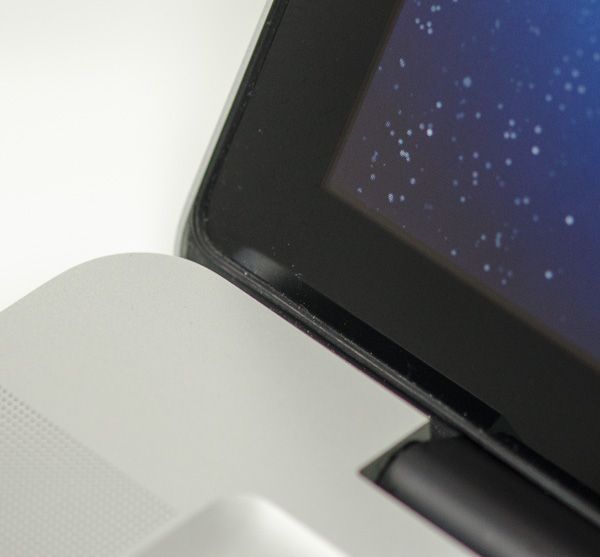
Non-Retina MacBook Pro, notice the gap between the outermost LCD glass and the cover glass
The MacBook Pro’s Retina Display does away with the cover glass and instead uses a fairly unique LCD assembly. There are still two pieces of glass but the outermost glass is actually a different size and shape - it integrates a bezel. By integrating the bezel into the outermost glass in the LCD stack you get the same effect as a cover glass but without the added reflections it introduces.
You also limit the possibility of dust getting trapped between the cover glass and the LCD. The danger is that you no longer have a protective piece of glass in front of your expensive new LCD. If you scratch the display you're scratching the LCD itself. While this has been true for conventional matte displays for a while, it's worth mentioning if you're used to Apple's glossy displays where you did have that added security layer.
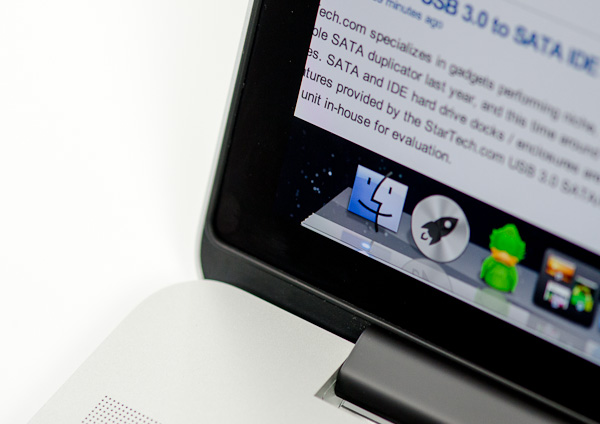
The MacBook Pro with Retina Display, no gap, no cover glass
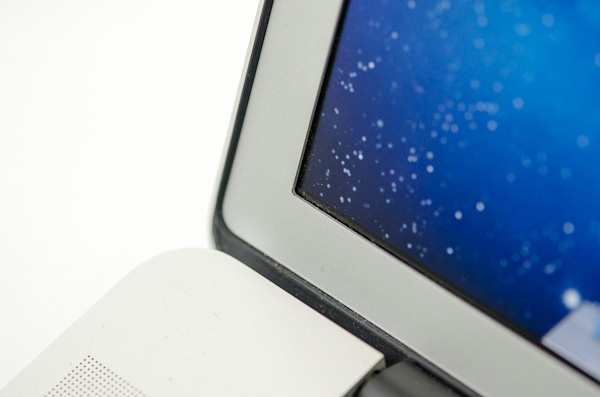
The 2011 MacBook Pro with High-Res Matte display option, no cover glass, top bezel

From left to right: 2010 High Res Glossy MBP, 2012 rMBP, 2011 High Res Matte MBP
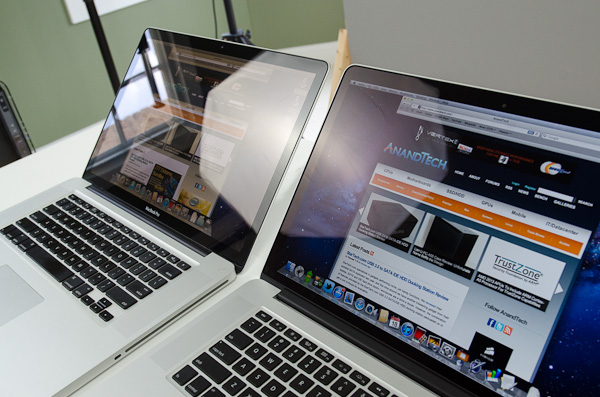
Glare handling indoors - 2011 High Res, Glossy MBP (left) vs 2012 rMBP (right)
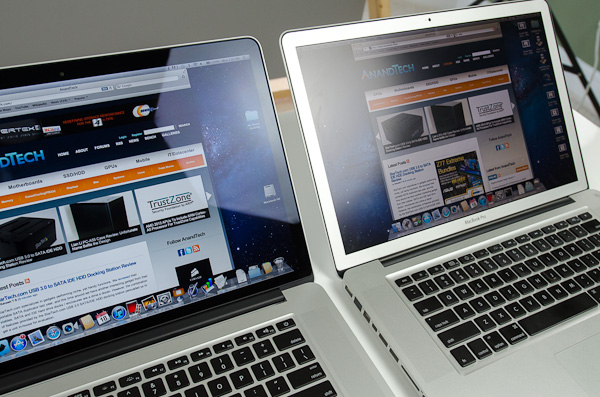
Glare handling indoors - 2012 rMBP (left) vs. 2011 High Res, Matte MBP (right)
The Retina Display is also obviously an extremely high resolution panel at 2880 x 1800. Note that this is 44.6% more pixels than Apple’s 27-inch Thunderbolt Display, and 26.6% more pixels than the 30-inch panels that we’ve loved for so long - all in a 15.4-inch notebook display.
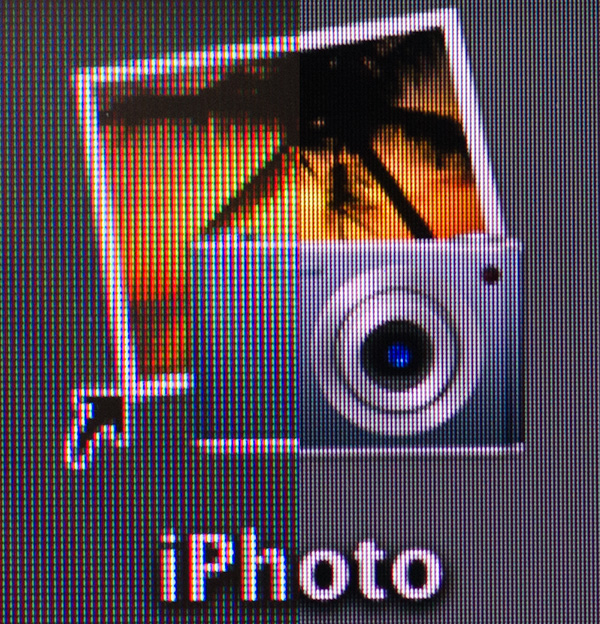
An iPhoto shortcut, High Res 2011 MBP (left) vs. Retina Display MBP (right)
At 220 pixels per inch it’s easily the highest density consumer notebook panel shipping today. At normal viewing distances and even with my face closer than I’m comfortable putting it I simply cannot discern individual pixels.
It’s the combination of these two elements, the removal of the cover glass and the insanely high pixel density that makes everything from text to UI elements just look painted on the new Retina Display. And the effect is gorgeous. I’ve never seen a prettier panel and it’s actually ruined me for pretty much all other displays, notebook and desktop.
While I can appreciate the iPad’s Retina Display, the impact from the MacBook Pro’s display is even more significant. Perhaps it’s because I still spend so much time working on a standard, non-tablet display, but I’m far more excited about this display than anything else Apple has delivered under the Retina moniker.
It’s not just pixel density that Apple has to offer here. Similar to its Retina Displays in the iPhone and iPad, the MacBook Pro’s Retina panel ditches TN in favor of IPS technology. The result is an incredible improvement in viewing angles. On a notebook I don’t spend a lot of time viewing it from far left/right angles, although I see the benefit when I’ve got others huddled around my display. Here the panel performs admirably - you lose brightness at far left/right angles but there’s no perceivable color shift. In fact, the painted on effect is even more impressive at these far left/right viewing angles.
For a single user however the more impressive characteristic is just how good the display looks at vertically off-center angles. I wrote much of the initial parts of this review while on an airplane in coach, which with a 15-inch notebook on my lap means I’m going to be looking at the display at a weird angle to begin with. The thinner rMBP doesn’t do enough to make the airplane usage model any better if the person in front of you decides to recline, but the IPS panel does make the display perfectly usable at the off-center angle you’ll inevitably have to deal with.
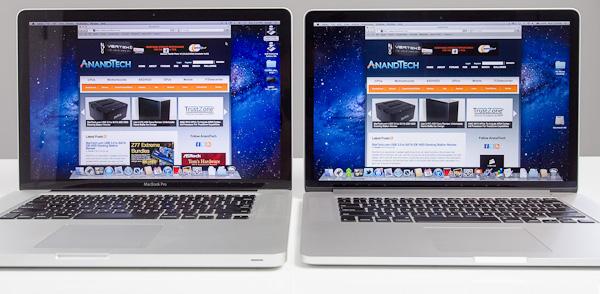
2010 High Res, Glossy MBP (left) vs. 2012 rMBP (right)
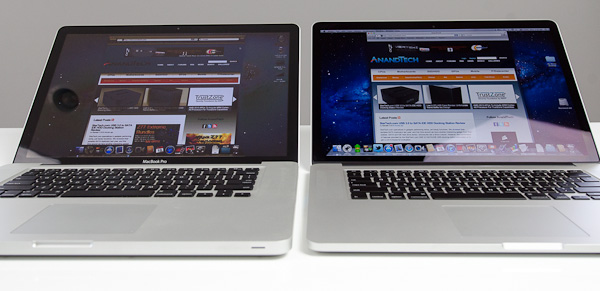
Hello colorshift!
2010 High Res, Glossy MBP (left) vs. 2012 rMBP (right)


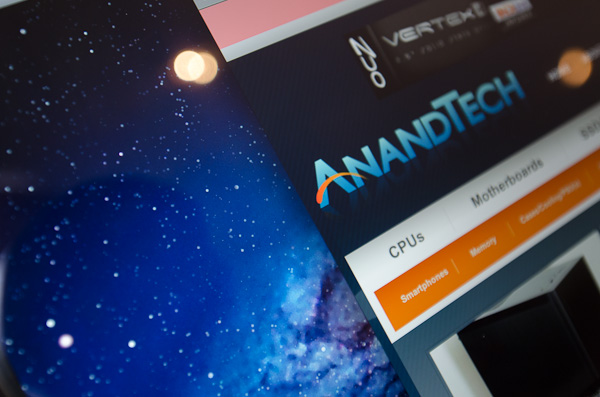
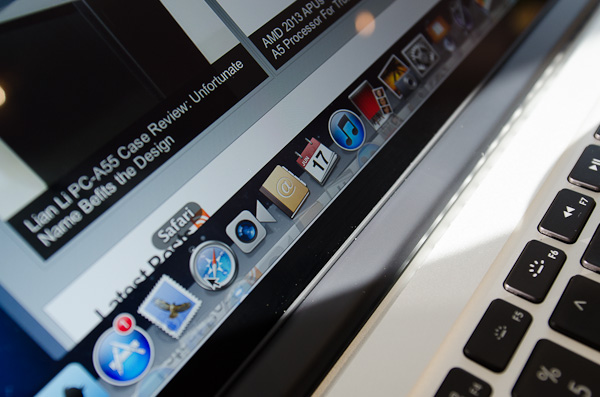
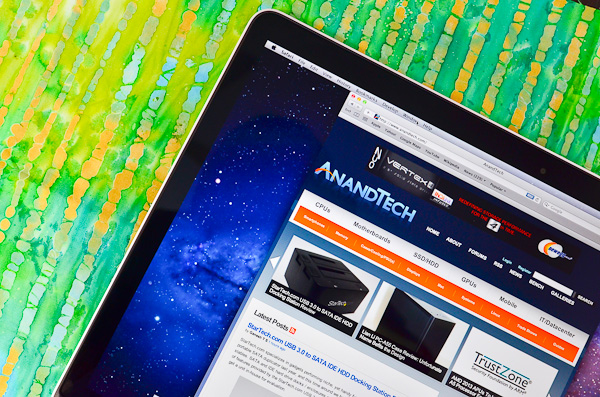
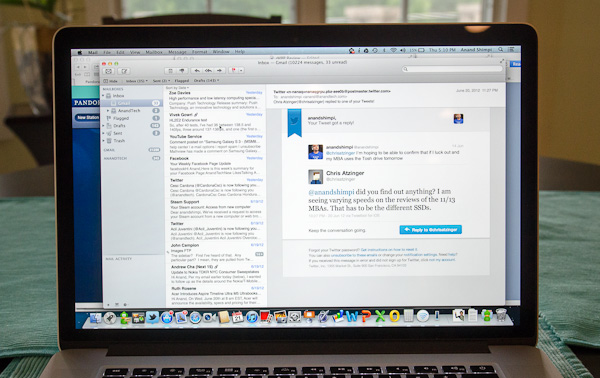
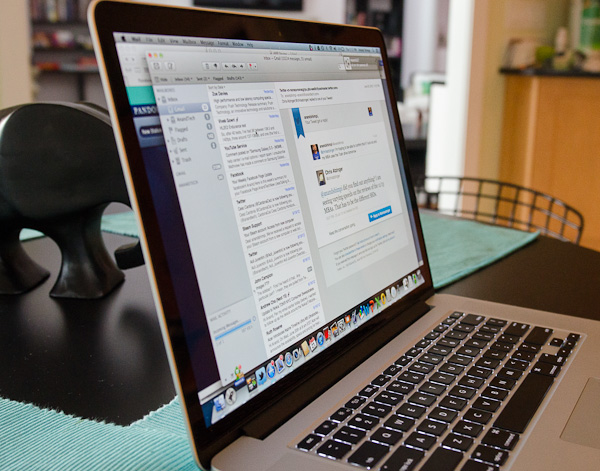








471 Comments
View All Comments
tipoo - Sunday, June 24, 2012 - link
There's always something better coming in a year...He did also say that Mountain Lion should improve the scrolling performance.Heathmoor - Friday, July 6, 2012 - link
The greatest downside is the max speed of its Wi-Fi, specially notorious in a high-end laptop that is expected to make heavy use of wireless connection due to its lightweight and long battery life. I don't care if the image sometimes doesn't scroll very smoothly, this won't slow my workflow. In contrast, the internet wireless connection can become the real bottleneck in a few years time, specially while streaming videos, downloading large files or even syncing other devices, what also can take a lot of time. Certainly, most wireless networks won't get upgraded the day one, but my next purchase is intended to last more than 2-3 years, and in that time span the IEEE 802.11n standard will be rendered obsolete due to the hugh difference between the IEEE 802.11n and the forthcoming IEEE 802.11ac standard. Personally, this feature is what makes me wait for the next upgrade, hopefully next year fall.USER8000 - Saturday, June 23, 2012 - link
For its weight it is impressive how much has been crammed into the laptop!However,looking at the test figures,how can the MBP RD display be the "king of displays" if the 11.6" IPS UX21 display has better colour accuracy and is as good or better in all other non- pixel density metrics?? It has a much higher colour accuracy than any laptop display on the market for example:
http://www.anandtech.com/show/6023/the-nextgen-mac...
The UX21A has around a 63% improvement in the score although the MBP RD has a 16% improvement in PPI.
xype - Saturday, June 23, 2012 - link
I’m pretty sure Apple can come up with an _even better_ display that’s 4.0" display! \o/There’s a difference between a 11.6" and a 15.4" display in terms of "serious business" usability. The MBP’s display _is_ the "king of display" if you look at the whole package, but that doesn’t mean it wins out in every metric imaginable. Just like the MBP doesn’t win out in every metric imaginable—but that doesn’t mean it isn’t one of the most, if not the most impressive laptop that you can buy right now.
Apple usually manages to strike a really good balance in terms of price/performance/features/design/portability. But they only do so because they’re not dick-measuring on one single metric and are rather making a very complete overall package.
It’s fascinating how few people actually "get" that approach.
ananduser - Saturday, June 23, 2012 - link
Abstracting the panel, VaioZ has already been there regarding PC hardware. The truly unique feature is the panel.internetf1fan - Saturday, June 23, 2012 - link
In the bootcamp section you mention Windows doesn't support integer scaling. I am sorry but you should really do more research before spreading such lies. If you had bothered to look beyond the preset options you would have noticed that you can easily set the DPI to whatever you want. Even 200% which would give you the x2 you wanted.DeciusStrabo - Saturday, June 23, 2012 - link
If you have to resort in a hack I wouldn't really call it an "option".internetf1fan - Saturday, June 23, 2012 - link
It's not a hack.It's right there as another option. Right where the setting for 150% is.
internetf1fan - Saturday, June 23, 2012 - link
Here you go. It's right there. Not a hack.http://i.imgur.com/AAhDp.png
hyrule4927 - Saturday, June 23, 2012 - link
I'd say this was a solid and balanced piece. Unfortunately there's one little issue with this review and all of your Mac reviews. Talking about fan noise is only a sufficient examination of thermals if you are writing for an audience of teenage girls. How about putting out some solid CPU and GPU temperature data for a change?